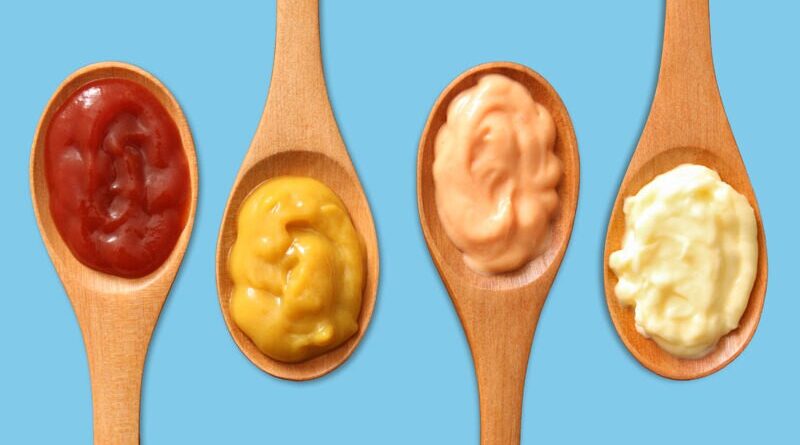The Best Delicious Healthy Alternatives to Mayo
Mayonnaise is a well-liked condiment that goes well with sandwiches, salads, and dips because of its acidic flavor and creamy texture. But it’s crucial to look at healthy Mayo substitutes if you have dietary constraints or are looking for something healthier. In this post, we explore a range of tasty and healthy alternatives to Mayo that not only taste and feel like mayo but also have extra health advantages. Find out how these healthy alternatives to Mayo can improve your meals, from homemade to plant-based and vegan options.
Nutritional Comparison: Mayo vs. Alternatives
A common condiment, mayonnaise is renowned for its tart flavor and creamy texture. It may, however, be heavy in fat and calories. In contrast, mayo substitutes provide healthier fats and fewer calories in a lighter version. Probiotics and protein are included in low carb Greek yogurt dressing, while monounsaturated fats found in avocado spread are heart-healthy.
Making healthier decisions without compromising flavor is made easier for people when they are aware of these nutritional variations.
Homemade Healthy Alternatives to Mayo
Making homemade mayo alternatives gives you more control over the components and lets you tailor them to your tastes. Here, we look at a few straightforward and wholesome substitutes that you can quickly prepare in your kitchen:
Avocado Spread:
- Using a fork, mash ripe avocado until it’s smooth and creamy.
- For added taste, add a squeeze of lemon juice, a dash of salt, and optional seasonings like paprika or garlic powder.
- The avocado spread has the same smooth feel as mayo, but it also has fiber, vitamins, and heart-healthy fats.
Hummus:
- Puree the chickpeas, olive oil, lemon juice, tahini (sesame seed paste), and garlic until smooth.
- Along with protein, fiber, and other nutrients, hummus has a savory flavor profile and a creamy consistency.
- For further flavor depth, add fresh herbs, sun-dried tomatoes, or roasted red peppers to your hummus.
Tahini Sauce:
- Blend tahini well with water, lemon juice, finely chopped garlic, and a small amount of salt.
- In addition to being packed with vital minerals like calcium, iron, and magnesium, tahini sauce has a deep, nutty flavor.
- To change the consistency, add more tahini for a thicker sauce or more water for a thinner one.
Greek Yogurt Dressing:
- Whisk together Greek yogurt, lemon juice, olive oil, minced garlic, and herbs such as parsley or dill.
- Probiotics for digestive health, tangy flavor, and creamy texture are all provided by Greek yogurt dressing.
- For a lighter option without compromising flavor, use non-fat or low-fat Greek yogurt.
Mustard-Based Dressings:
- Combine Dijon mustard, vinegar, olive oil, honey, maple syrup, and any additional herbs or spices in a whisking motion.
- Dressings with a mustard basis have a tangy taste profile, low in calories, and extra antioxidants from the mustard seeds.
Creative Uses in Healthy Alternatives to Mayo Recipes
Discovering inventive methods to use mayo substitutes in your recipes can revitalize traditional fare and spur culinary creativity. Let’s look at some ways to include these replacements in salads, dips, and sandwiches:
Sandwiches:
Spread pieces of bread with mayo substitutes such as avocado spread, Greek yogurt dressing, or garlic aioli, then top with your preferred sandwich contents.
For a tasty and healthy spread for plant-based burgers or vegetarian wraps, try cashew cream or hummus.
Dress cold-cut sandwiches or grilled paninis with mustard-based dressings or herb-infused mayo substitutes to bring taste and moisture.
Salads:
For a light and refreshing dressing, toss salads with oil-free vinaigrettes made with citrus juice, mustard, and herbs.
To give salads a creamy texture and zesty flavor, replace standard mayo-based dressings with Greek yogurt dressing or tahini sauce.
For extra smoothness and nutritional value, mix hummus or avocado spread into grain or pasta salads.
Dips:
At get-togethers or parties, serve cashew cream or hummus as a dip for raw veggies, pita chips, or crackers.
For dipping chips, pretzels, or breadsticks, make creamy dips by mixing Greek yogurt dressing or tahini sauce with herbs, spices, and lemon juice.
Use garlic aioli or mustard-based dressings to make a tasty dip for shrimp skewers, potato wedges, or chicken tenders.
You can also watch the video to learn more about this.
Benefits of Healthy Alternatives to Mayo Creative Uses
Variety:
By using mayo substitutes in your recipes, you may experiment with different flavors and textures and give your meals more variety.
Healthy Alternatives to Mayo Nutritional Boost:
Numerous mayo substitutes provide extra nutritional advantages such as vitamins, protein, and healthy fats, which improve the nutritional value of your meals.
Customization:
Use herbs, spices, and other ingredients to personalize mayo substitutes to your diet and taste preferences. This allows you to get creative with your cooking.
You may turn commonplace meals into delectable and healthful gourmet creations by thinking outside the box and investigating inventive applications for mayo substitutes in sandwiches, salads, and dips. The opportunities for experimenting with flavors, cutting calories, and including more plant-based components are infinite when it comes to mayo substitutes.
Conclusion
In conclusion, despite its sour flavor and creamy texture, mayonnaise is still a popular condiment. However, to accommodate dietary restrictions and find healthier solutions, a variety of substitutes have been investigated. These substitutions, which range from tahini sauce to Greek yogurt dressing and avocado spread to mustard-based sauces, not only replicate the flavor and consistency of mayo but also have additional health advantages.
These mayo substitutes offer countless opportunities for culinary experimentation and may turn ordinary meals into delectable and nourishing dishes, regardless of your goals—cutting calories, adding more plant-based components, or experimenting with new flavors and combinations.
Incorporating these substitutes into salads, dips, and sandwiches emphasizes diversity, nutritional boosts, and customization, resulting in a tasty and healthier eating experience.
